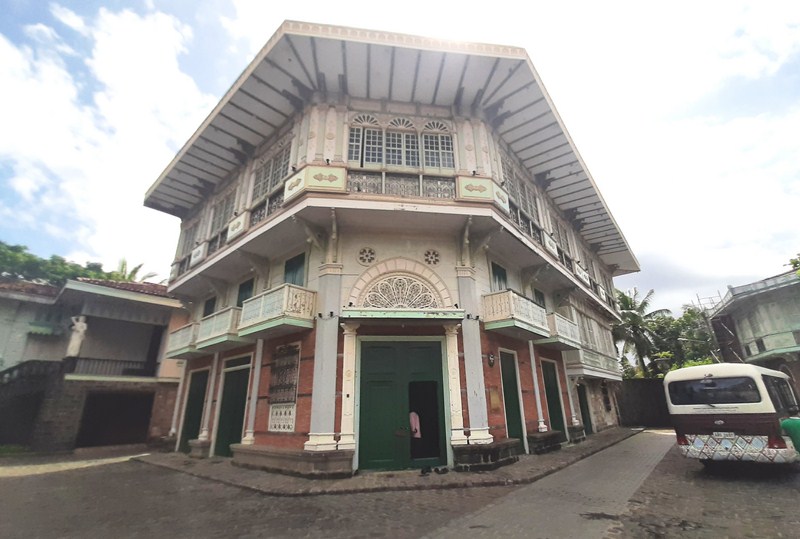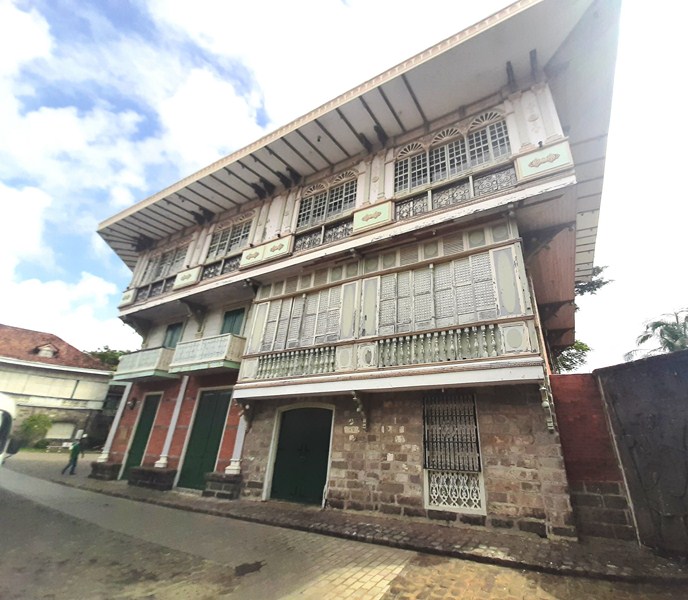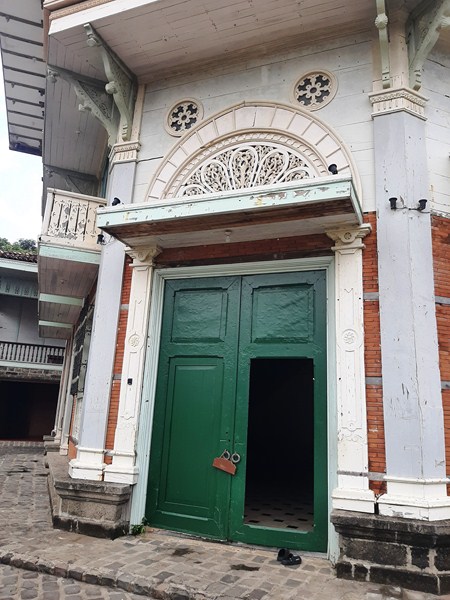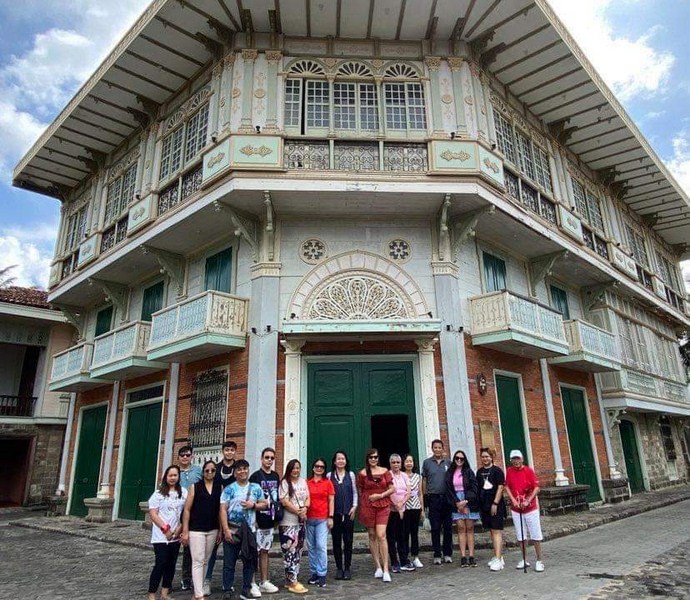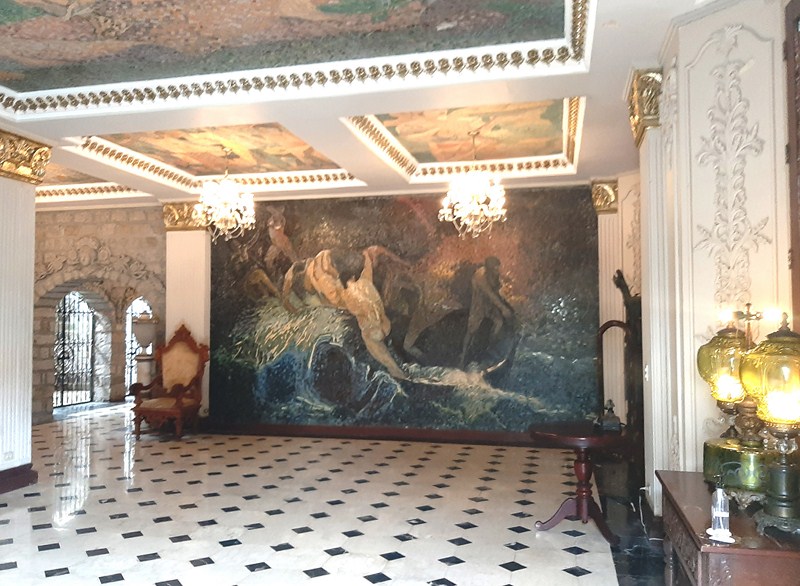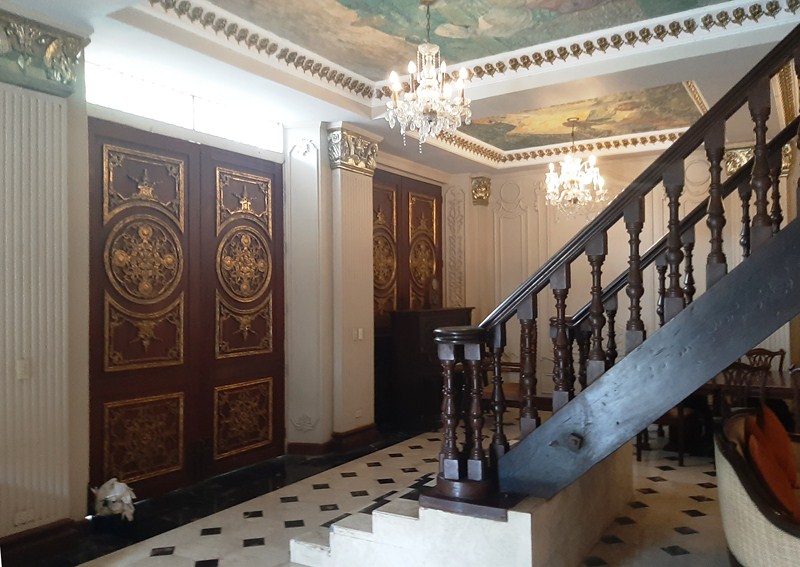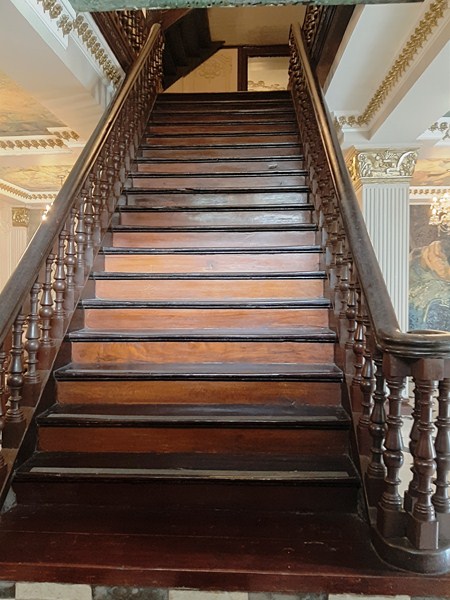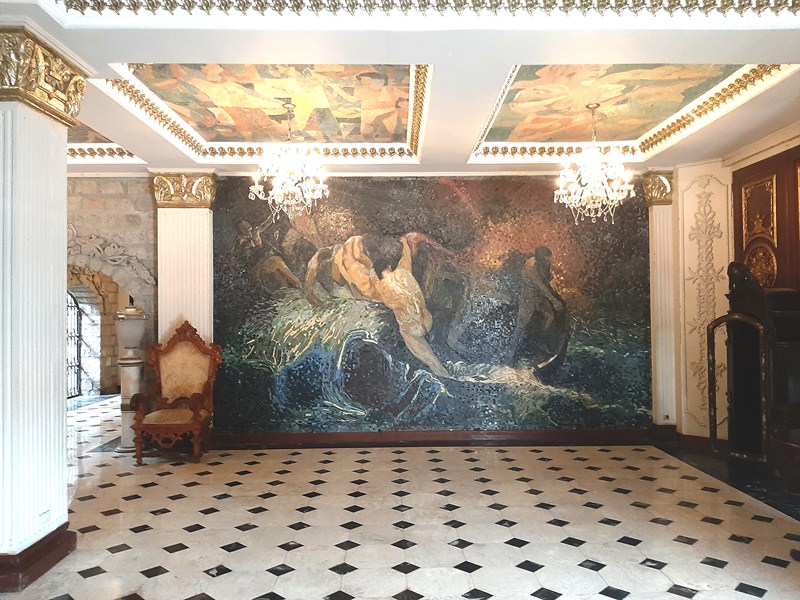Our land tour, via coaster, of Las Casas Filipinas de Acuzar (Spanish for “Acuzar’s Philippine Houses”) ended at Casa Byzantina . Also known as the “Don Lorenzo del Rosario (a signer of the Malolos Constitution and one of the numerous building contractors in Binondo) House,” it is a three-storey, intricately designed mixed-used “floral” bahay na bato (stone house) originally located at the corner of Madrid and Penarrubia Streets at San Nicolas, Binondo, Manila.
Designed in 1890 by Catalan architect Joan Josep Jose Hervas y Arizmendi , it is the only existing building designed by him in the Philippines.
Born in Barcelona, Spain in 1851, architect Joan Josep Jose Hervas y Arizmendi got his degree in 1879 and, from 1892 to 1898, became the municipal architect (or arquitecto municipal) of Sitges and Tortosa in Spain and in Manila, Philippines. Some of his works were private residences such as Casa Perez Samanillo (Circulo Ecuestre at present), owned by the Perez-Samanillos, former Manila residents (they owned the Perez Samanillo building at Escolta, Manila), in 1910, for which he was awarded the 1911 Barcelona City Council Prize. His other works include Hotel de Oriente and La Insular Fabrica de Tabacos y Cigarillos. He died in 1912.
So called because of its Byzantine ornamentation, it has a half-moon opening above the large entrance with grill works, arches above the windows of the third floor, engaged columns, and appliqued carvings. However, the house reflects more of the Neo-Mudejar (Spanish-Moorish) architectural style as seen by its Moorish door transom on the exterior, which is echoed in the interior wooden arches and transom traceries. A mirador (balcony) crowns the roof above the interior’s stairs with turned balusters. The stairs, leading up to the second and third floors, provides access to both wings of the house.
In 1869, as the streets at the commercial concentrations at Binondo and San Nicolas districts in Manila were narrow, corner buildings were mandated to be built with a chamfer (or chaflan) and, in compliance with this municipal building regulation (which also led to the creation of eight-sided open spaces, or plazoletas, at every street corner), the house was built with a chamfered corner.
Its first storey (which served as commercial spaces) was made of adobe stones and bricks while the two upper storeys (which served as residential spaces) were built with various sturdy Philippine hard woods. Galvanized iron sheets were used for roofing.
Used as commercial and residential space, during the 20th century, the house was occupied by a succession of tenants. In 1914, it was the first home of the the Instituto de Manila which rented it for elementary and high school classes until 1919 when the institute moved to Sampaloc, Manila, eventually becoming the University of Manila. In 1939, despite its neglected state, it was cited by Tribune magazine.
After World War II, the nearby community decayed and the land reclamation for the North Harbor. The old houses became tenements and some were torn down to make way for commercial buildings. Casa Byzantina was leased to various tenants.
By 2000, it was in a miserable condition. After eight years, the house was declared structurally unsound. Yet, despite its condition, more than 50 informal, urban poor families were still occupying the house. In 2009, the house was sold, dismantled, and brought to Bagac, Bataan.
Now transformed into an elegant first class hotel, it is now considered as the most expensive hotel in the resort. This luxurious six-bedroom accommodation, complete with luxurious amenities, 24/7 butler service and free cocktails, has 7 bathrooms and sleeps 16.
Casa Byzantina: La Casas Filipinas de Acuzar, Brgy. Ibaba, Bagac, 2107 Bataan. Tel: (632) 8833-3333 local 116-117. Mobile number: (0917) 872-9361. E-mail: reserve@lascasasfilipinas.com. Website: www.lascasasfilipinas.com. Coordinates: 14°36′09.6″N 120°23′06.9″E
How to Get There: It is a three-hour drive from Manila via NLEx and SCTEx. There is a shuttle service plying the Manila-Bataan route daily with New World Hotel Makati and Astoria Plaza as pickup and drop off points. For inquiries, call (63-2) 332-5338 and (63-2) 332-5286. The resort is accessible from the southeast through a two-lane road from the poblacion of Bagac.

